Introduction
Photonics, a field centered around the creation, release, modulation, and detection of light, has seen immense improvements, particularly in the development of lasers. Q-switched lasers, capable of generating potent, fleeting light pulses, owe their operation to key components known as saturable absorbers. This article explores the role of saturable absorbers in passively Q-switched crystals and their contribution to laser performance.
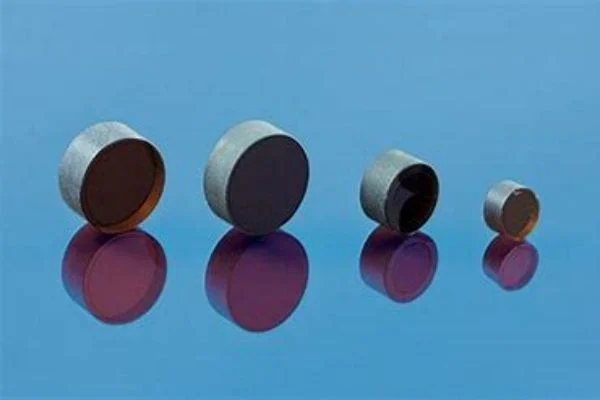
Understanding Saturable Absorbers
Saturable absorbers are unique materials that lessen their absorption as the light intensity they’re exposed to rises. Initially, they absorb a considerable amount of light. However, as the light intensity escalates, the absorption process reaches a “saturation” point, reducing absorption and enhancing transmission of the incident light.
Quantum mechanics principles drive the workings of saturable absorbers. When light hits the absorber, the atoms or molecules absorb photons and move to a higher energy state. This absorption has a limit. After reaching the absorber’s absorption capacity, incoming photons are more likely to stimulate a return to the lower energy state, leading to photon emission instead of absorption.
Role of Saturable Absorbers in Passively Q-switched Crystals
Passive Q-switching, a technique employed in lasers to generate high-power light pulses, incorporates a saturable absorber into the laser cavity. The absorber permits the accumulation of a high population inversion before reaching saturation and allowing light to pass.
The saturable absorber plays a two-fold role in a passively Q-switched laser: it initially inhibits the laser action by absorbing the photons, and then, once saturated, permits an abrupt release of the accumulated energy as an intense light pulse.
Contrasting Q-Switching with Continuous Wave Lasers
A comparison of Q-switched lasers and continuous wave lasers brings out the significance of saturable absorbers in passively Q-switched crystals. In continuous wave lasers, photons are emitted continuously, resulting in a lower power output. Conversely, Q-switching, enabled by saturable absorbers, permits an energy build-up leading to bursts of high-power pulses. This notable power output makes Q-switched lasers invaluable in numerous industrial, medical, and research applications.
Detailed Examination of Population Inversion in Q-Switching
‘Population inversion’ describes a state where the laser medium has more atoms in the excited state than in the ground state, a prerequisite for laser action. In passive Q-switching, the saturable absorber aids in maintaining this population inversion by preventing the early release of photons. This results in a larger number of excited atoms ready to contribute to the laser pulse when the saturable absorber achieves saturation.
The absorber’s saturation point is the critical point in the Q-switching process. When this point is reached, the absorber can no longer uphold the population inversion, allowing the abrupt release of the stored energy. This results in a high-power light pulse, characteristic of Q-switched lasers. The saturation point and the subsequent pulse release are determined by the properties of the saturable absorber and the light intensity.
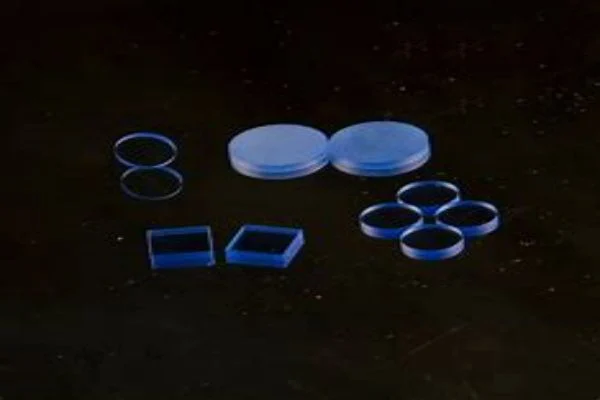
Saturable absorbers interact differently with various laser wavelengths. Not all saturable absorbers function effectively across all laser wavelengths. The absorber must be carefully selected to match the laser’s operating wavelength to ensure efficient energy storage and release, which is critical to optimizing laser performance and achieving the desired output features.
Dynamics of Saturable Absorbers in Q-Switching
The behavior of saturable absorbers in Q-switching is dynamic and not just about reaching the saturation point and releasing the pulse. The absorber also needs to recover after the pulse emission to be ready for the next cycle. This recovery process and its duration significantly affect the pulse repetition rate of the Q-switched laser. Factors such as the absorber’s saturation fluence, recovery time, and the light intensity play a vital role in determining this rate.
Saturable absorbers also influence the shape and duration of Q-switched laser pulses. The pulse shape, whether Gaussian, square, or another form, can affect the laser’s interaction with its target in various applications. Similarly, pulse duration, the time the pulse lasts, is a crucial parameter in many laser-based applications. By adjusting the properties of the saturable absorbers, one can alter the pulse shape and duration to meet specific needs.
The field of saturable absorbers is continuously progressing, with new materials and technologies emerging to enhance the performance and versatility of Q-switched lasers. For instance, research is ongoing on materials like graphene and topological insulators that exhibit saturable absorption. These materials could potentially offer better control over the Q-switching process and expand the range of applications for these lasers.
Effect of Saturable Absorbers on Laser Performance
Saturable absorbers enable precise control over the pulse energy in Q-switched lasers, essential in various applications where the energy of each pulse can greatly influence the result. For example, in medical procedures like laser surgery, pulse energy must be precisely controlled to ensure effective treatment without damaging healthy tissues. Similarly, in industrial applications like laser cutting or welding, pulse energy determines the quality of the work. Hence, saturable absorbers are integral in enhancing the utility and precision of Q-switched lasers.
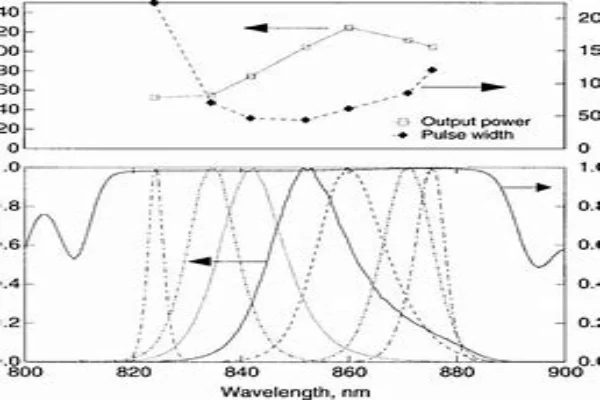
Peak power, the maximum power output of the laser pulse, can be significantly higher in Q-switched lasers than in continuous wave lasers, thanks to the energy accumulation facilitated by saturable absorbers. High peak power is essential in applications like laser marking or engraving, where it allows for clean, precise marks. By carefully choosing the saturable absorber and optimizing its properties, one can achieve the desired peak power in Q-switched lasers.
Saturable absorbers can influence the pulse duration by controlling when the energy build-up is released. Shorter pulse durations, often desired in applications like laser micromachining or medical treatments, can be achieved by using saturable absorbers with faster saturation times.
The repetition rate of a Q-switched laser, i.e., the number of pulses emitted per second, is directly influenced by the properties of the saturable absorber. Specifically, the recovery time of the absorber – the time it takes for the absorber to return to its initial state after releasing a pulse – dictates the repetition rate. In applications where high repetition rates are required, such as in high-speed laser scanning or data communication, saturable absorbers with fast recovery times are preferred.
The nonlinear absorption characteristics of saturable absorbers can be exploited to achieve high-contrast pulses. This is particularly beneficial in applications like ultrafast optics or telecommunications, where high contrast between the on and off states of the laser is required.
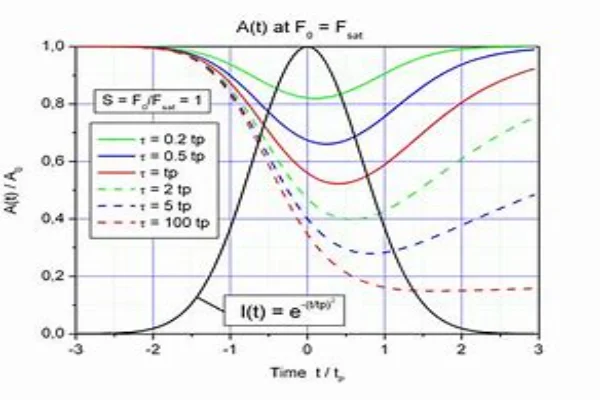
Saturable absorbers also impact the beam quality of Q-switched lasers. The beam quality, defined by parameters like beam divergence and beam profile, affects the efficiency and effectiveness of the laser in its application. By optimizing the properties of the saturable absorber, one can achieve superior beam quality, enhancing the overall performance of the laser.
Types of Saturable Absorbers and Their Selection
Various materials, including semiconductors, dyes, and certain ions embedded in crystals or glasses, can act as saturable absorbers. Recently, two-dimensional materials like graphene and topological insulators have also shown promise.
The choice of a saturable absorber depends on various factors such as the operational wavelength, required pulse energy and duration, and the specific application of the laser. Understanding these factors can guide the selection of the suitable saturable absorber to optimize laser performance.
Operational wavelength
The operational wavelength of the laser is a critical factor in selecting the saturable absorber. Different materials exhibit their saturable absorption characteristics at different wavelengths. Therefore, the chosen absorber must exhibit saturable absorption at the laser’s operational wavelength to ensure efficient Q-switching.
Pulse energy and duration
The required pulse energy and duration also influence the choice of the saturable absorber. Higher pulse energies require saturable absorbers with higher saturation fluences. On the other hand, shorter pulse durations can be achieved with absorbers that reach saturation faster.
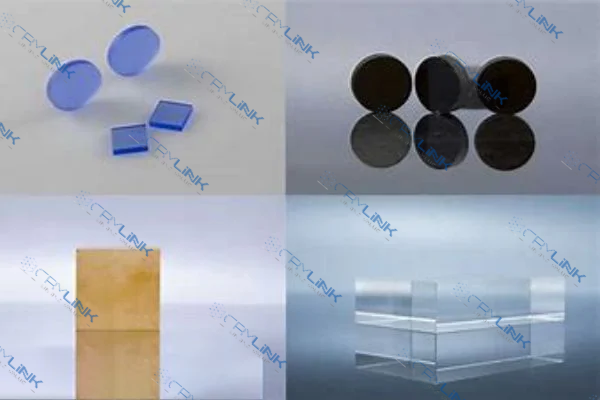
Specific applications of the laser demand different pulse characteristics. For example, certain medical procedures may require short, high-energy pulses, while some industrial applications might require longer pulses with high repetition rates. The selection of the saturable absorber must align with these specific requirements to achieve optimal performance.
Recent research has unveiled the potential of new materials such as graphene and topological insulators as saturable absorbers. Graphene, with its ultrafast response and broadband absorption, could be a promising candidate for applications requiring short pulses with high repetition rates. Similarly, topological insulators, with their unique electronic properties, could offer new possibilities in tuning the pulse characteristics in Q-switched lasers.
Emerging Trends and Future Developments
The field of saturable absorbers is evolving rapidly, propelled by advancements in materials science and laser technology. The discovery and understanding of new materials exhibiting saturable absorption, combined with innovative engineering approaches, are expected to further enhance the performance and versatility of Q-switched lasers.
Graphene and topological insulators represent some of the exciting frontiers in the field. Their unique properties could potentially redefine the capabilities of Q-switched lasers. Moreover, advancements in nanotechnology could open the door to the development of nanostructured saturable absorbers with enhanced performance and tunability.
On the application front, the increasing demand for high-performance lasers in industries such as healthcare, manufacturing, and telecommunications, along with emerging applications in areas like environmental monitoring and space exploration, will continue to drive innovations in Q-switched laser technology and saturable absorbers.
In the realm of theoretical research, efforts are underway to develop more accurate and comprehensive models to describe the behavior of saturable absorbers in Q-switched lasers. These models will enable better predictions of laser performance and assist in the design and optimization of new lasers and saturable absorbers.
Conclusion
Saturable absorbers play a critical role in passively Q-switched crystals, enabling the generation of high-power, short-duration light pulses. By regulating energy storage and release, they significantly influence the performance and capabilities of Q-switched lasers. With ongoing research and development in new materials and technologies, the future of saturable absorbers and Q-switched lasers holds much promise for a range of applications in various fields. Understanding the underlying mechanisms and optimizing the properties of saturable absorbers will continue to be at the forefront of advancements in laser technology.

Frank
Frank graduated from the University of Shanghai for Science and Technology, majoring in optics. As a technical engineer at Crylink Company, he deeply understands crystal materials and laser components.
Related Video(s) with this Article
Related Product(s) with this Article
Related Application(s) with this Article
